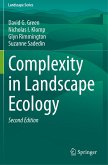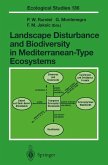Interactions matter. To understand the distributions of plants and animals in a landscape you need to understand how they interact with each other, and with their environment. The resulting networks of interactions make ecosystems highly complex. Recent research on complexity and artificial life provides many new insights about patterns and processes in landscapes and ecosystems. This book provides the first overview of that work for general readers. It covers such topics as connectivity, criticality, feedback, and networks, as well as their impact on the stability and predictability of ecosystem dynamics. With over 60 years of research experience of both ecology and complexity, the authors are uniquely qualified to provide a new perspective on traditional ecology. They argue that understanding ecological complexity is crucial in today's globalized and interconnected world. Successful management of the world's ecosystems needs to combine models of ecosystem complexity with biodiversity, environmental, geographic and socioeconomic information.
From the reviews of the first edition:
"This book is meant to be a 'gentle introduction' to the field of complexity and landscape ecology. ... the book succeeds in its goal ... . the most inspiring idea in the book is that seemingly complex ecological phenomena can often be explained by simple assumptions ... . As such, this book could serve as a springboard for stimulating research about other general ecological principles ... . I recommend the book to those who need a simple introduction to this complex topic ... ." (Erica A. H. Smithwick, Ecology, Vol. 87 (11), November, 2006)
"This book is meant to be a 'gentle introduction' to the field of complexity and landscape ecology. ... the book succeeds in its goal ... . the most inspiring idea in the book is that seemingly complex ecological phenomena can often be explained by simple assumptions ... . As such, this book could serve as a springboard for stimulating research about other general ecological principles ... . I recommend the book to those who need a simple introduction to this complex topic ... ." (Erica A. H. Smithwick, Ecology, Vol. 87 (11), November, 2006)








